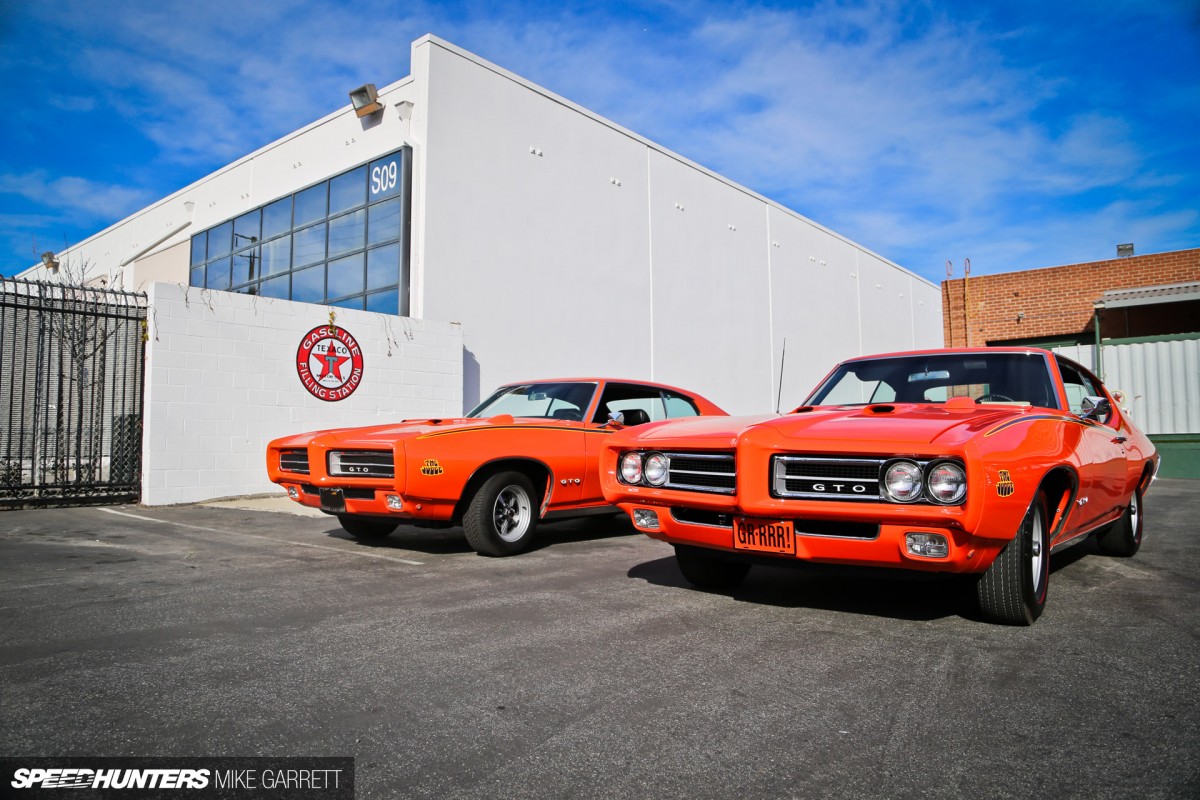
This is a big time for automotive anniversaries – more specifically 50th anniversaries. The Porsche 911 is currently in the midst of its 50th anniversary celebration, as is the Ford Mustang, two models that would many would put on the list of the world’s greatest cars.
There’s another car that’s celebrating its 50th birthday this year and for fans of the American muscle car, it’s a huge one. I’m talking of course about the Pontiac GTO, the vehicle that many consider to be the first true muscle car and a pioneering machine in the history of the American performance car.
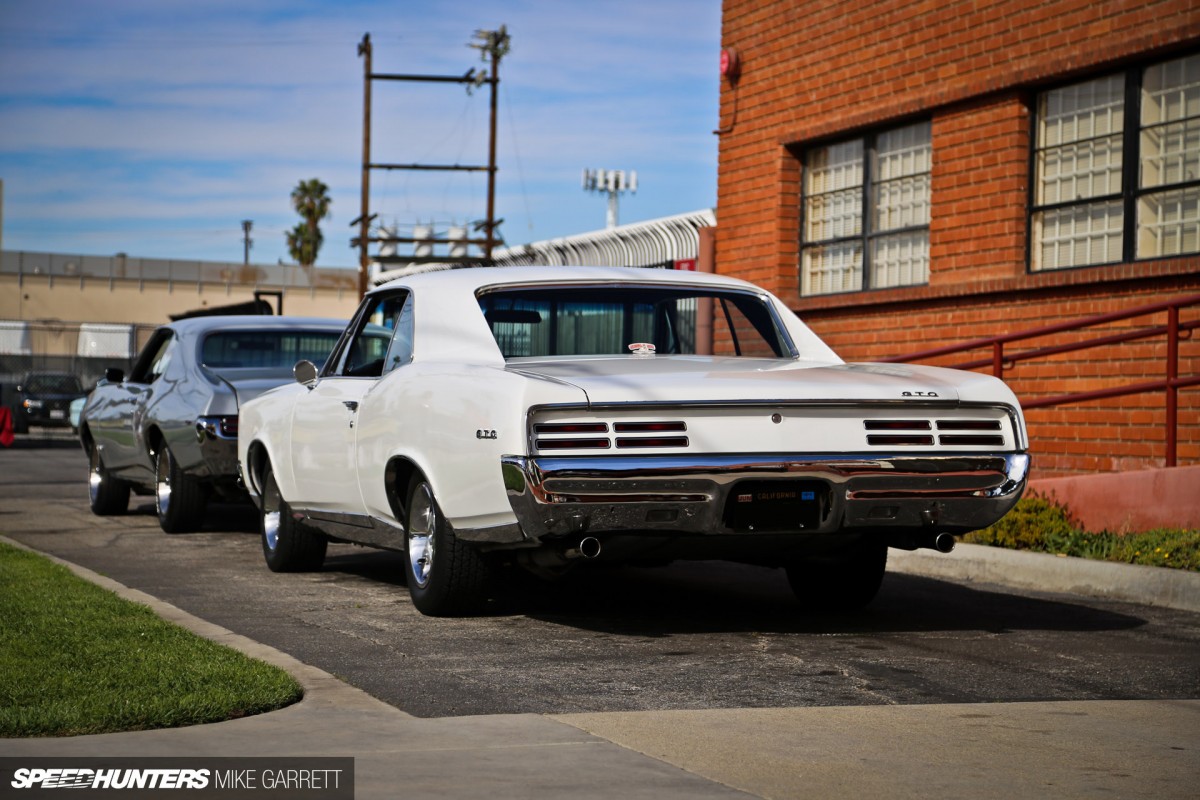
Aside from the GTO’s historical importance, the story of how it was created is one of the auto industry’s most exciting tales. So in honor of the GTO’s 50th, I thought it was only fitting to take a look back at the first muscle car.
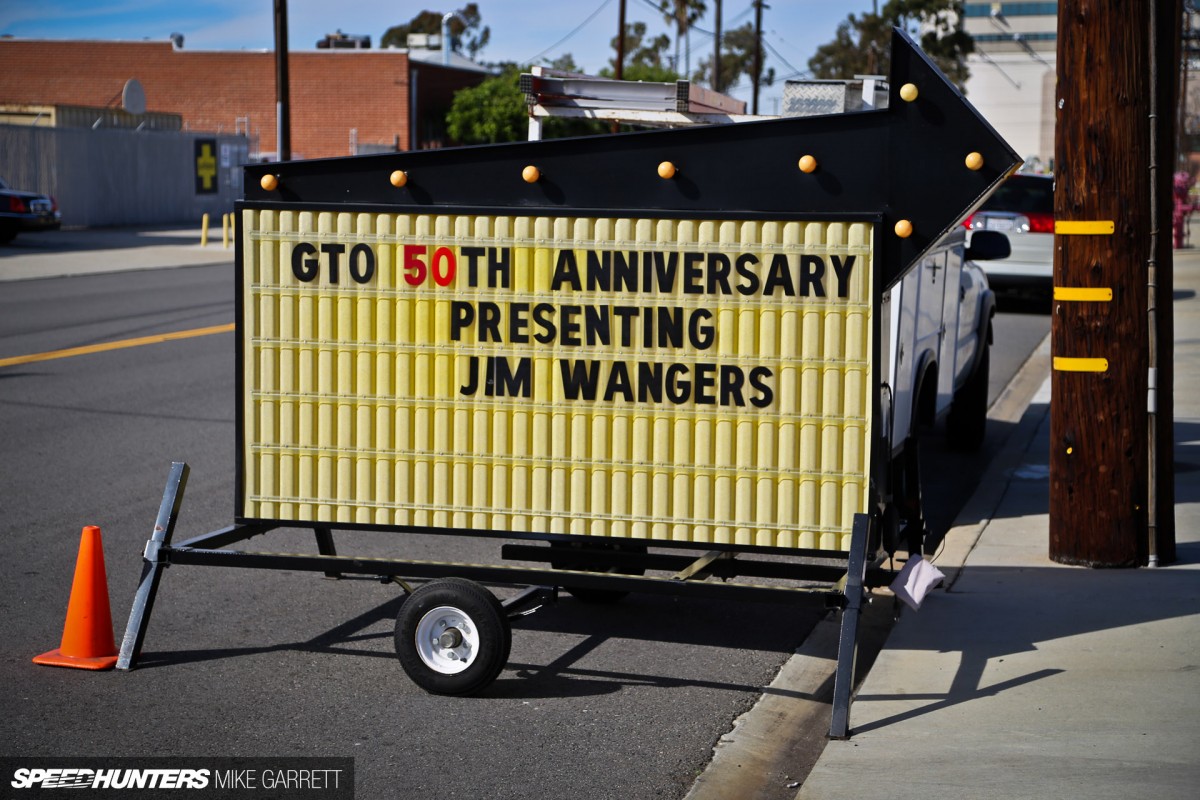
Of course I might be a little biased on the subject as my dad is the longtime owner of a 1970 GTO – a car which will forever hold a special spot in my heart. In fact, earlier this month I tagged along with him to a GTO 50th anniversary event at the Automobile Driving Museum in El Segundo, California.

It wasn’t a huge show, but it did include some of the nicest GTOs from around Southern California and combined with some fantastic LA weather, it had all the makings of a perfect afternoon.
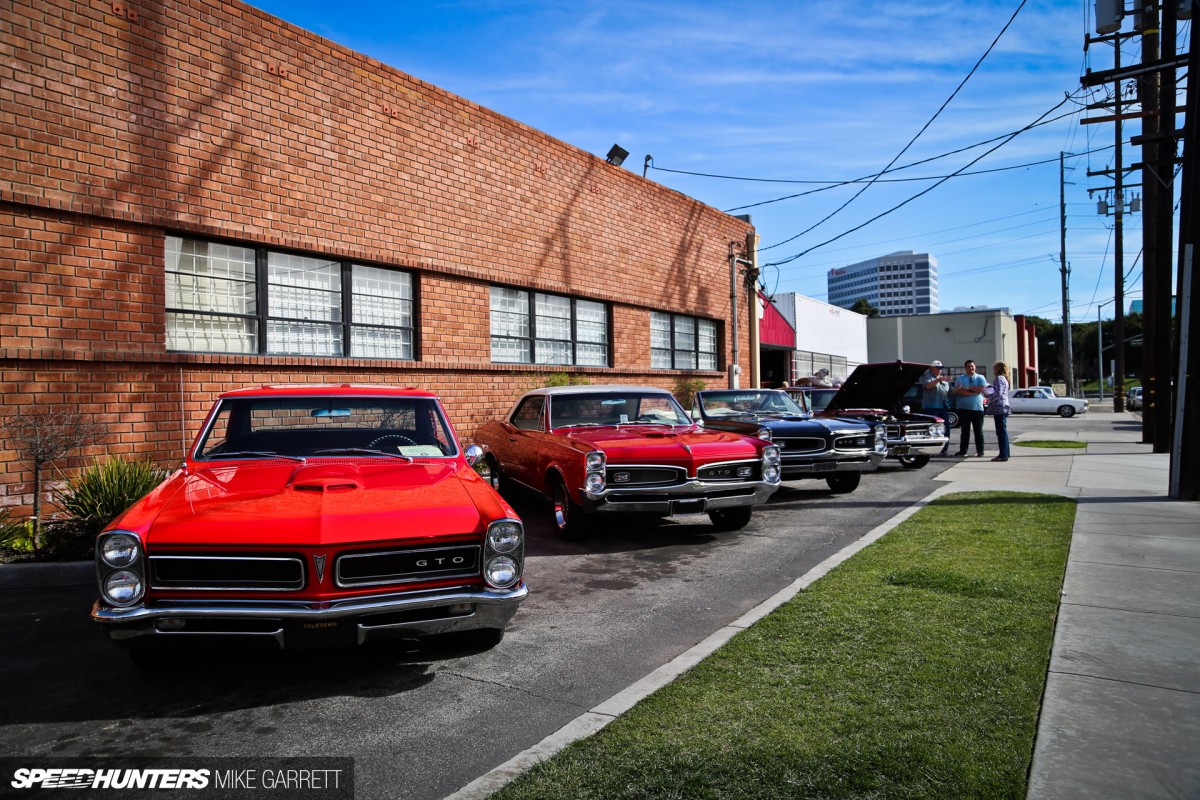
But in addition to the array of GTOs that came out, there was also a special guest on hand that made the event more than just a car show. This was going to be a history lesson.

The guest would be none other than Mr. Jim Wangers – the man who is considered ‘The Godfather of the GTO’. Jim didn’t create the GTO, but he served as the Marketing Manager for the car and was there from the beginning. From NHRA drag events and top secret engineering sessions, to late night street races on Detroit’s Woodward avenue, the man is a living history book of muscle car lore.
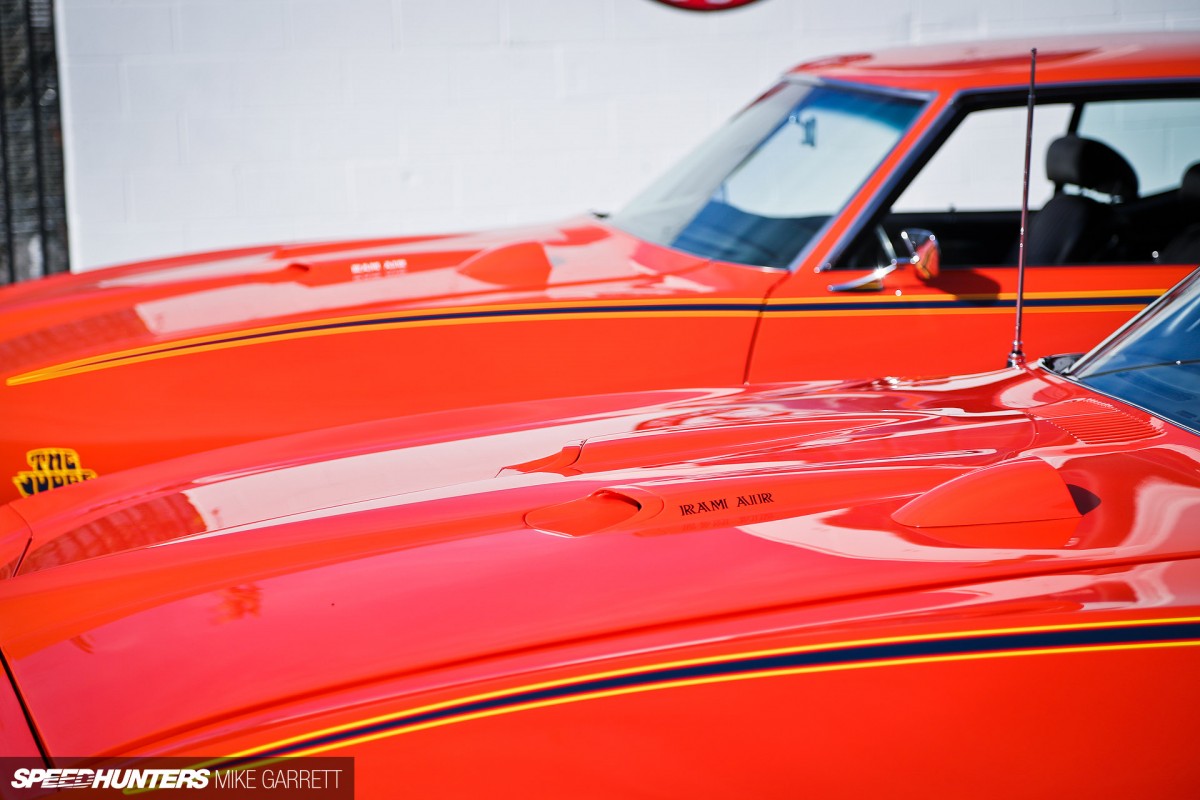
Perhaps more importantly, Jim is the guy responsible for shaping the GTO into something that young people wanted. As Warren Oates’ aptly named GTO character in the film Two Lane Blacktop says, “Performance and image. That’s what it’s all about.”
A secret project
To understand the history of the GTO, you first have to go back to the mid 1950s – a time when GM’s Pontiac brand was struggling to find an identity for itself. You have to remember that this was a dramatically different time for the American auto industry. Import vehicles were few and far between – and the primary competition was between Detroit’s own automakers. There was intense rivalry not just between the big three, but between the different brands in the General Motors family. What could set Pontiac apart from its rivals?
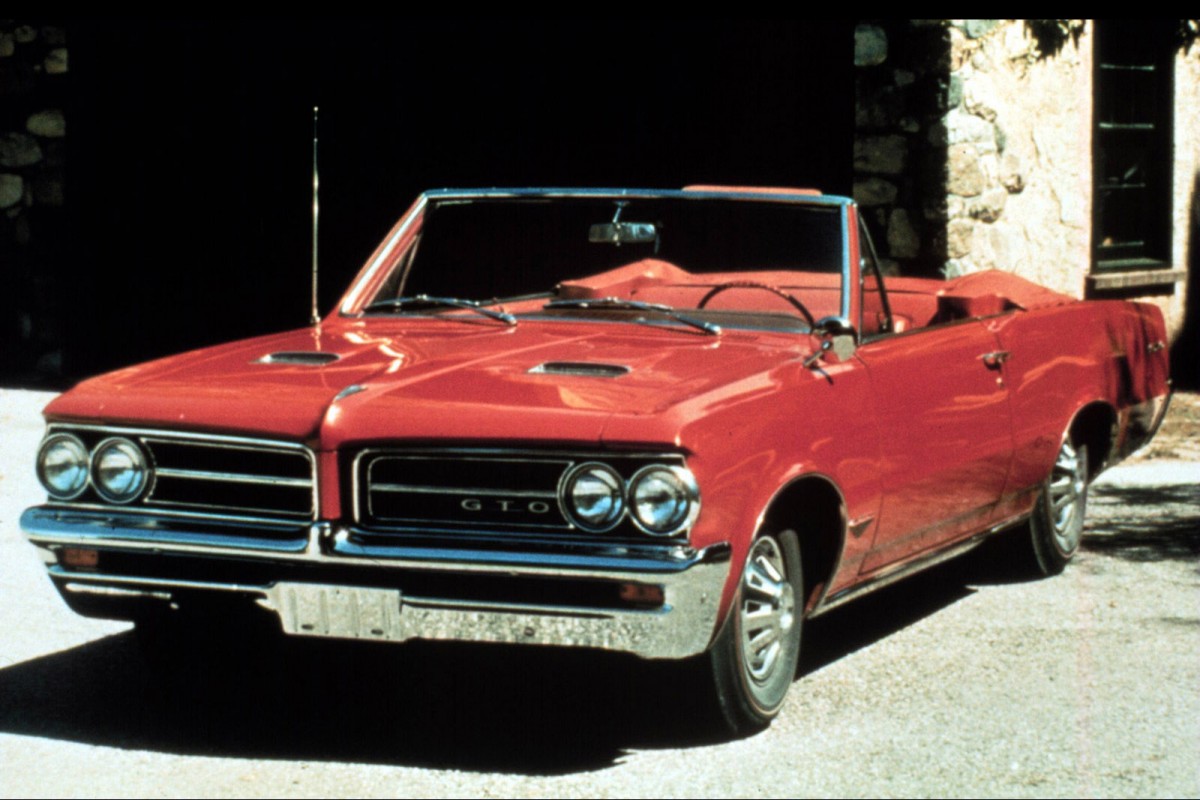
In the late ’50s and early ’60s, Pontiac increasingly pushed itself as GM’s performance brand. On the street, Pontiacs would become known for their sleek styling and ‘wide track’ stance. In motorsport, the brand earned much success in both NHRA stock class drag racing and in NASCAR thanks to drivers like Fireball Roberts, winner of the 1962 Daytona 500.

But in 1963, just as things were really beginning to pick up for Pontiac, General Motors issued a company-wide ban on factory-supported motorsport. Pontiac’s performance-minded builders and marketers were left scratching their heads and wondering what to do next.

That’s when a trio of Pontiac engineers – engine guy Russell Gee, chassis guy Bill Collins and chief engineer John DeLorean (yes that John DeLorean) came up the brilliant idea of taking the performance from the track to the street. More specifically, they looked at Pontiac’s all-new midsize Tempest which was to be introduced for the 1964 model year. Their idea was simple. Why not take the smaller, lighter Tempest and fit it with one of the larger, more powerful motors from Pontiac’s full-size line-up?
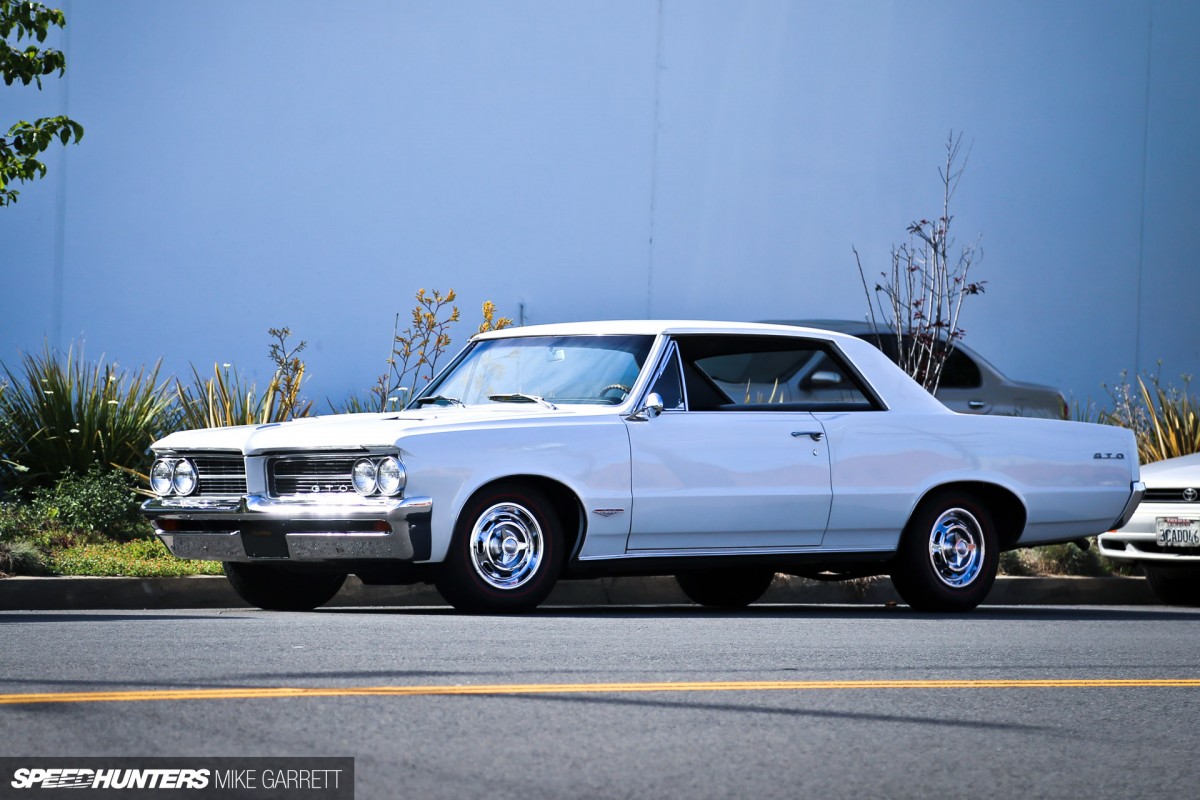
Remember that at this time, all of GM’s divisions had their own unique motors that were completely different from each other, and the good thing about Pontiac’s line of V8s was that despite different displacements, all of their engines shared the same dimensions. There’s no such thing as a small block or big block Pontiac engine. That meant that is was actually quite easy for Pontiac’s engineers to drop a larger 389 cubic inch V8 into a ’64 Tempest prototype at GM’s Milford Proving Grounds in Michigan.

Shortly after, Pontiac had a rather quick Tempest on its hands. Now they just needed to figure out how to keep the car a secret from both rival GM brands who shared the same proving ground, and from GM suits who had imposed a 330 cubic inch limit on all of the company’s mid-sized cars. To get around this, Pontiac figured they could offer the larger motor as part of an option package on the standard Tempest and not as its own model. Of course it also helped that GM would be kept out of the loop as long as possible.
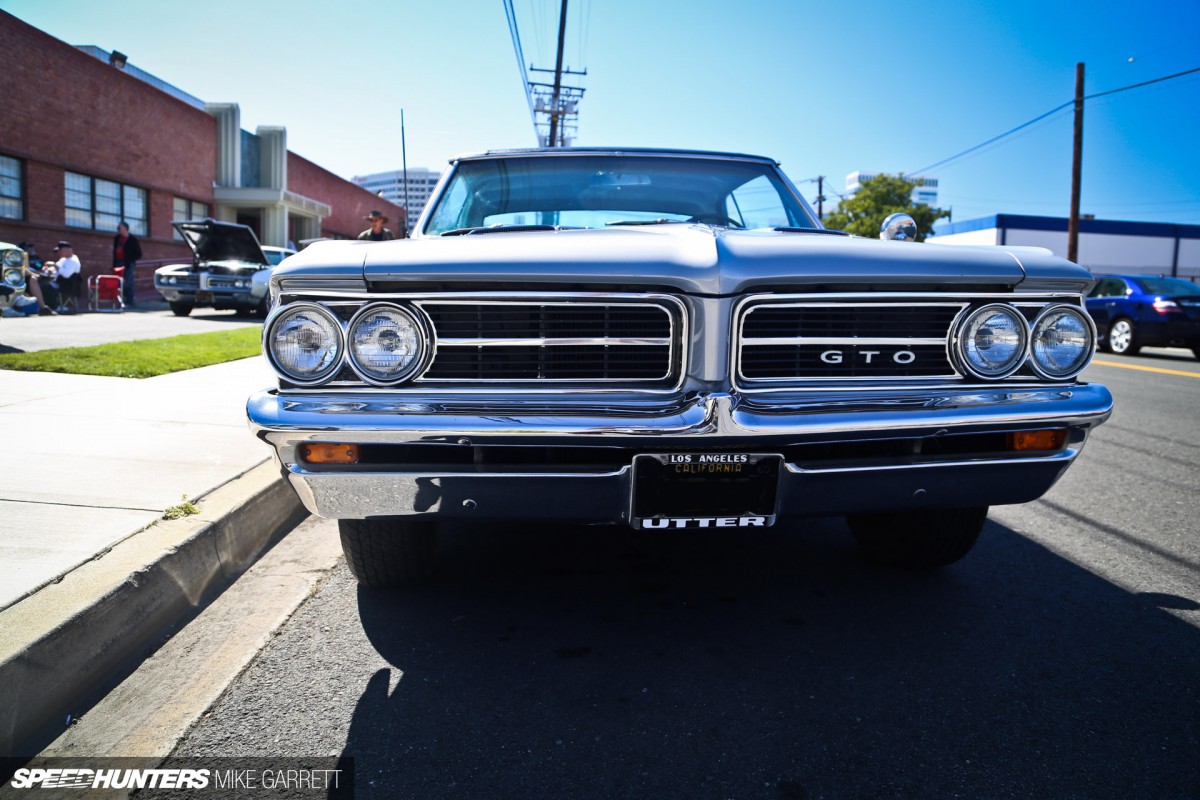
But what to call this newfangled creation? How about GTO? Which in Italian means Gran Turismo Omologato or Grand Touring Homologated. While many assumed Ferrari owned the name GTO, it was actually owned by the FIA – and since there were no copyright rules for initials, the GTO name was go. Although the car would be offered with a few different powertrain options, the hot model would be the one equipped with Pontiac’s tri-power triple carb set-up and a four-speed manual transmission.

So without much fuss, Pontiac rolled out the GTO option for the 1964. The car wasn’t anticipated to be a big seller, so just 5,000 models were shipped to excited dealers around the country. The rest is history. Despite the purposeful lack of hype, the GTO quickly caught on among young performance-minded buyers looking for a street bruiser at an affordable price. Once the executives saw how well the first GTOs sold, the floodgates were opened and the marketing blitz began.

Naturally the auto enthusiast media was quite interested in this new Pontiac, and this lead to one of the most controversial magazine comparisons ever – Car & Driver’s infamous Pontiac GTO vs Ferrari GTO test.

While the numbers said the big Pontiac couldn’t quite hang with the svelte Ferrari on the road course, the American GTO put down some mind-boggling acceleration figures: 0-60 in 4.6 seconds and a quarter mile in 13.1. Those are fast numbers by today’s standards, let alone the ones of 50 years ago.

As it turns out, the vehicle used in that test (the red car photographed above) was a ringer. It wasn’t until decades later that Jim Wangers finally admitted the car in question was actually powered by a larger 421 cubic-inch engine which looked the same as the GTO’s standard 389. Controversial or not, the infamous Ferrari article only cemented the GTO’s reputation and got people lining up at Pontiac dealers around the country.

By this point GM had caught full wind of the GTO experiment and the company quickly allowed all of its other brands to begin development on their own high displacement mid-size cars. Ford and Chrysler had taken notice as well and soon the muscle car movement was under way.
Performance and image
As Mr. Wangers will tell you, the GTO would not have been the GTO without marketing and image. Even before 1964, you could special order drag-strip-ready full-size cars from all the big Detroit automakers – but these cars were both expensive and aimed at serious racers, not the exploding youth market.

While I have trouble remembering what I did last week, Jim can retell these great stories of the ’60s in vivid detail. One tale that particularly amused me was about the GTO’s redline tires and how they looked cool but delivered dismal traction. In Jim’s marketing eye, this was actually a good thing. Why? Because the redlines made for dramatic photos of tire smoke for advertisements and magazine articles. Image!
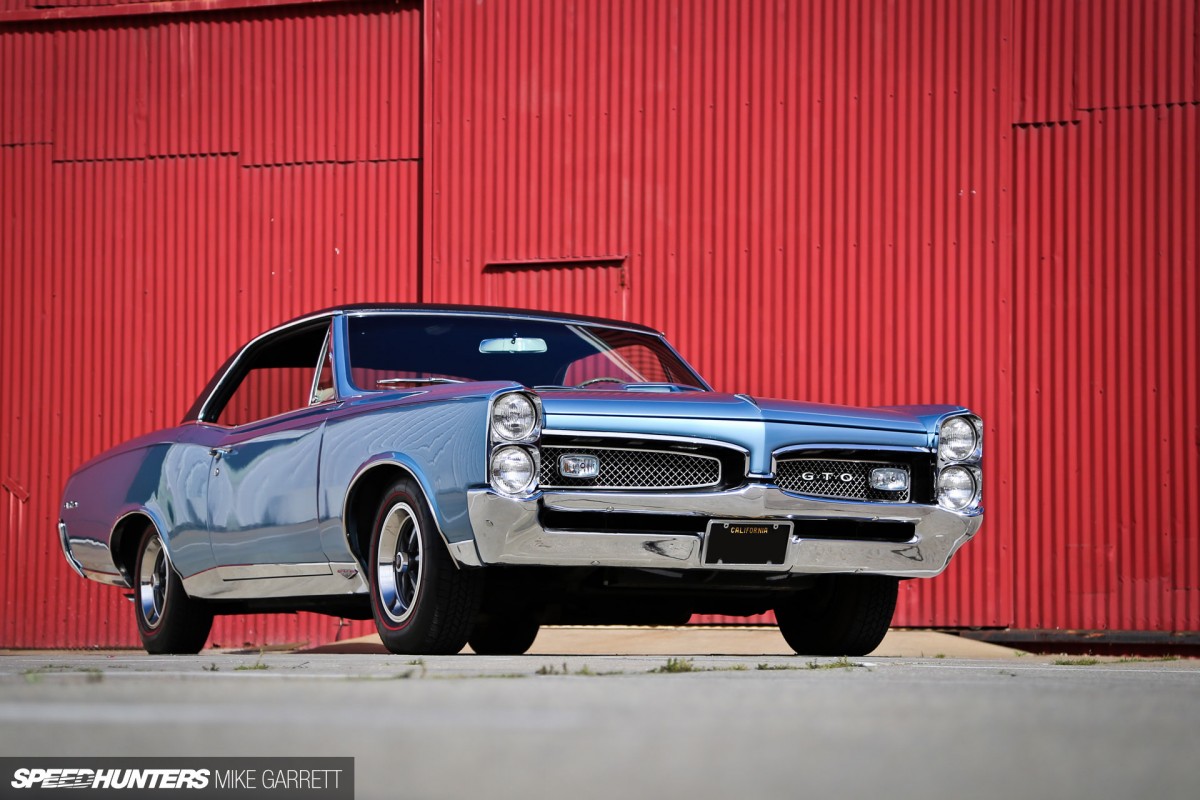
By 1966 the GTO had become its own separate model and by this point was fighting head to head with muscle car rivals from other GM divisions along with those from Ford and Chrysler. For 1967, displacement grew to 400 cubic inches to help keep pace in the horsepower wars.
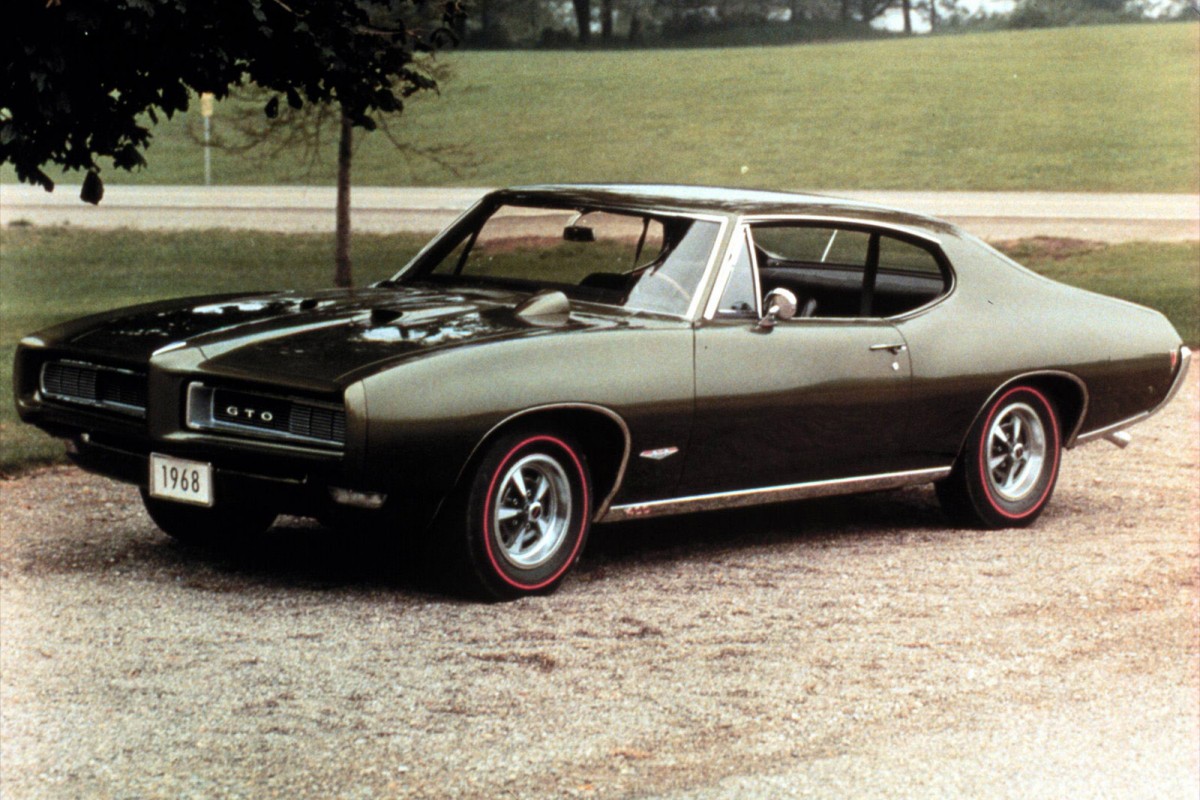
In 1968 the GTO moved on to GM’s all new A-body platform, which along with dramatic new styling, featured a unique Endura front bumper and optional hide-away headlights. Also in 1968, Plymouth introduced the new Road Runner – which was designed to provide muscle car performance at a bargain basement price.
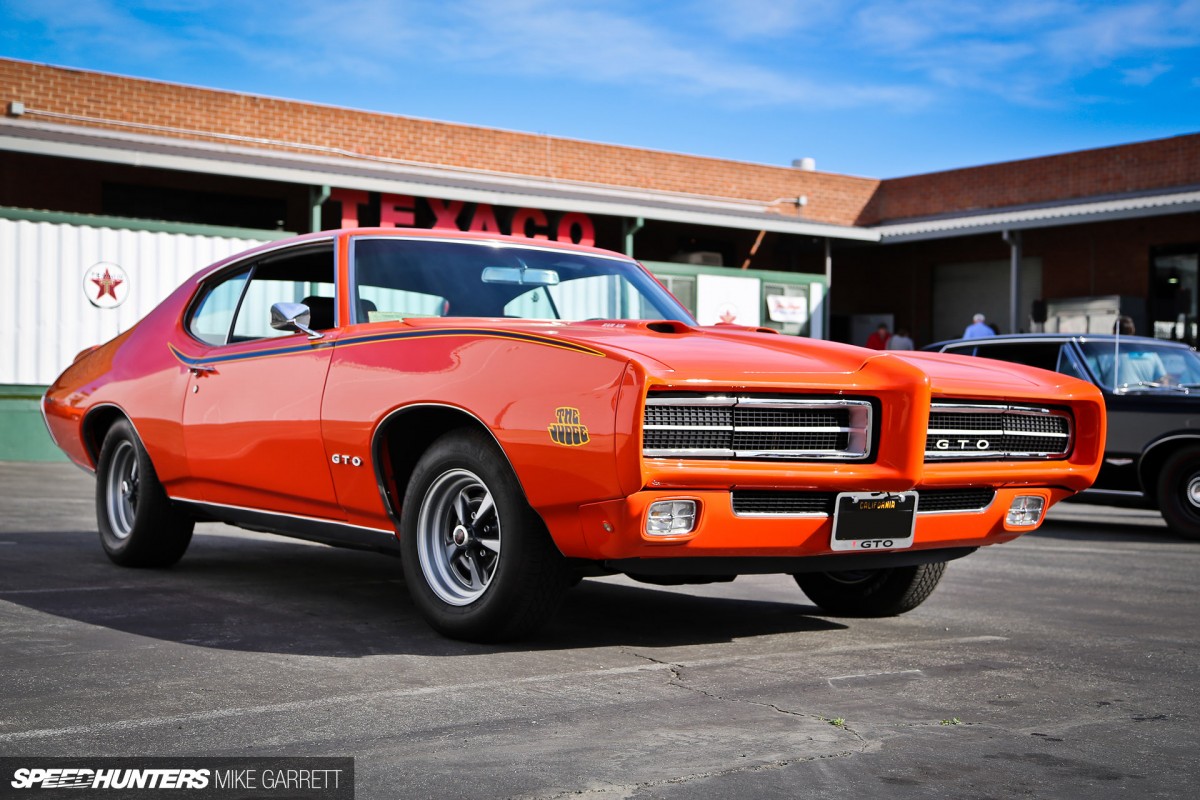
The success of the Road Runner prompted Pontiac to introduce the GTO Judge in 1969. Like the Road Runner, the Judge was originally intended to be a stripped-down, low-cost GTO but by the time it was complete, it was actually more expensive than a standard GTO.
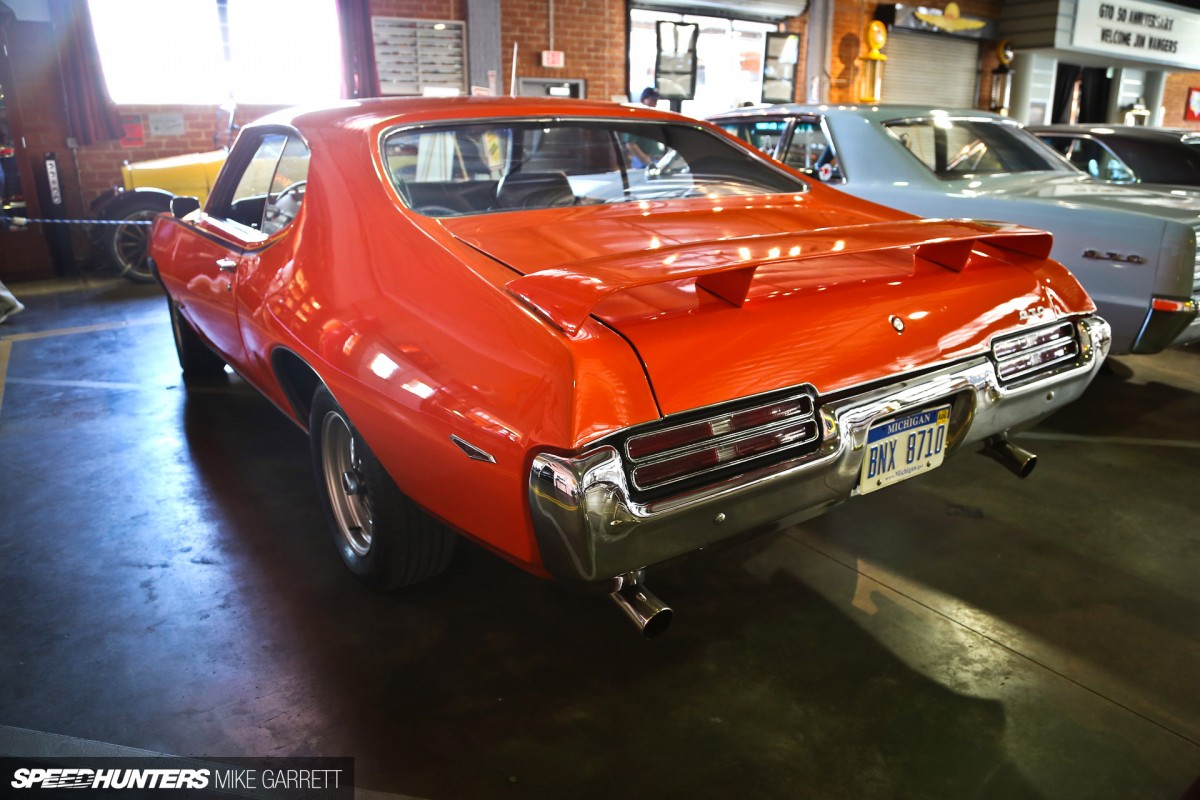
Ordering the Judge package got you a standard Ram Air III 400 cubic inch V8 making 366 horsepower, which quickly returned the GTO to the forefront of the increasingly hot muscle car wars.
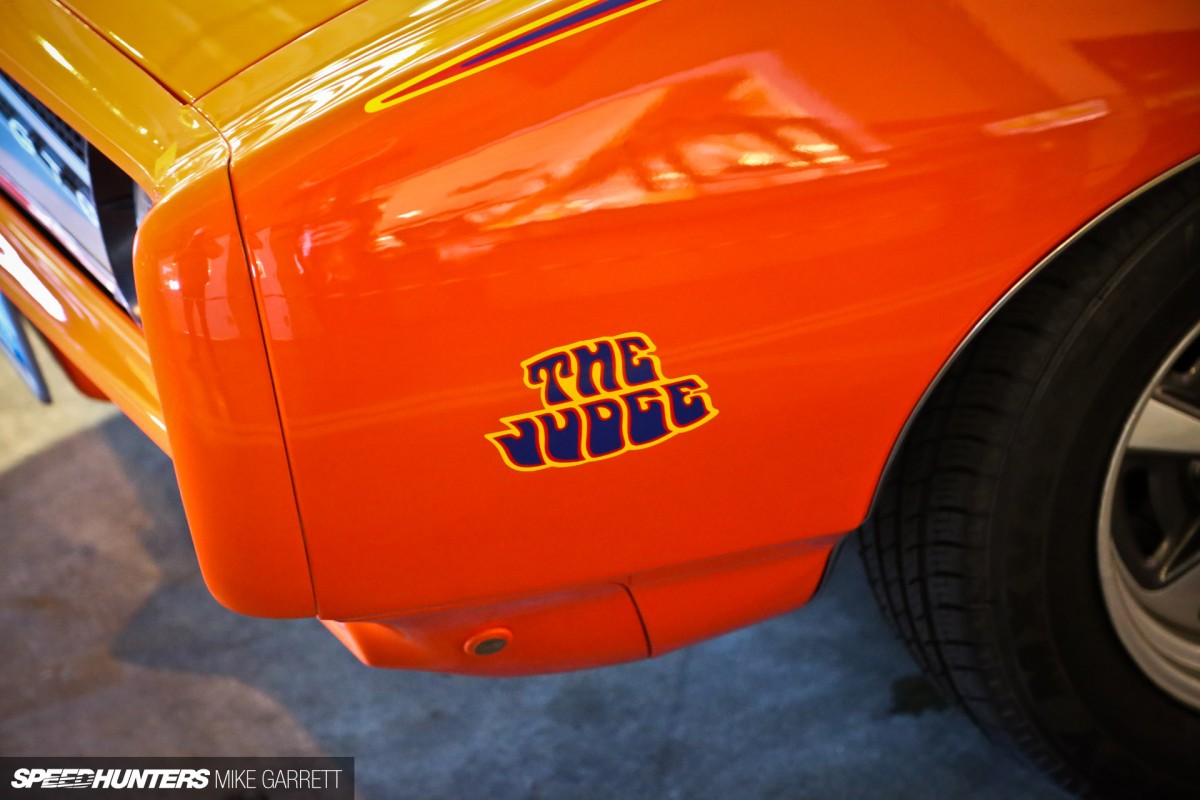
Just as important, the Judge offered an overt exterior with special stripes and logos – with an eye-catching hue called Carousel Red serving as the signature body color. More than anything, the ’69 Judge symbolized the extravagance of the muscle car at the turn of the decade.
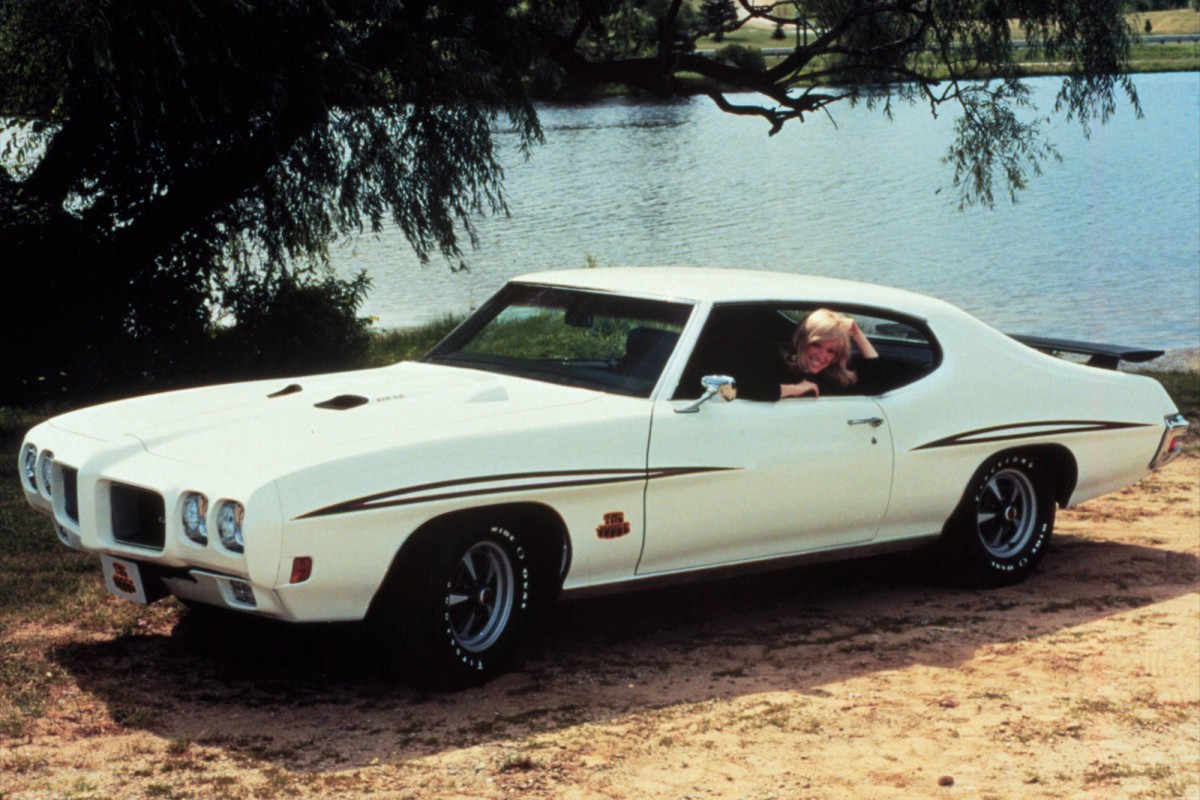
For 1970, both the GTO and Judge were back, and the big news was the addition of a 455 cubic inch V8 to the line-up now that GM removed its company limit on engines larger than 400 cubic inches in mid-size cars. When equipped with the 455 HO engine package, the GTO made a pavement-ripping 500 foot pounds of torque.
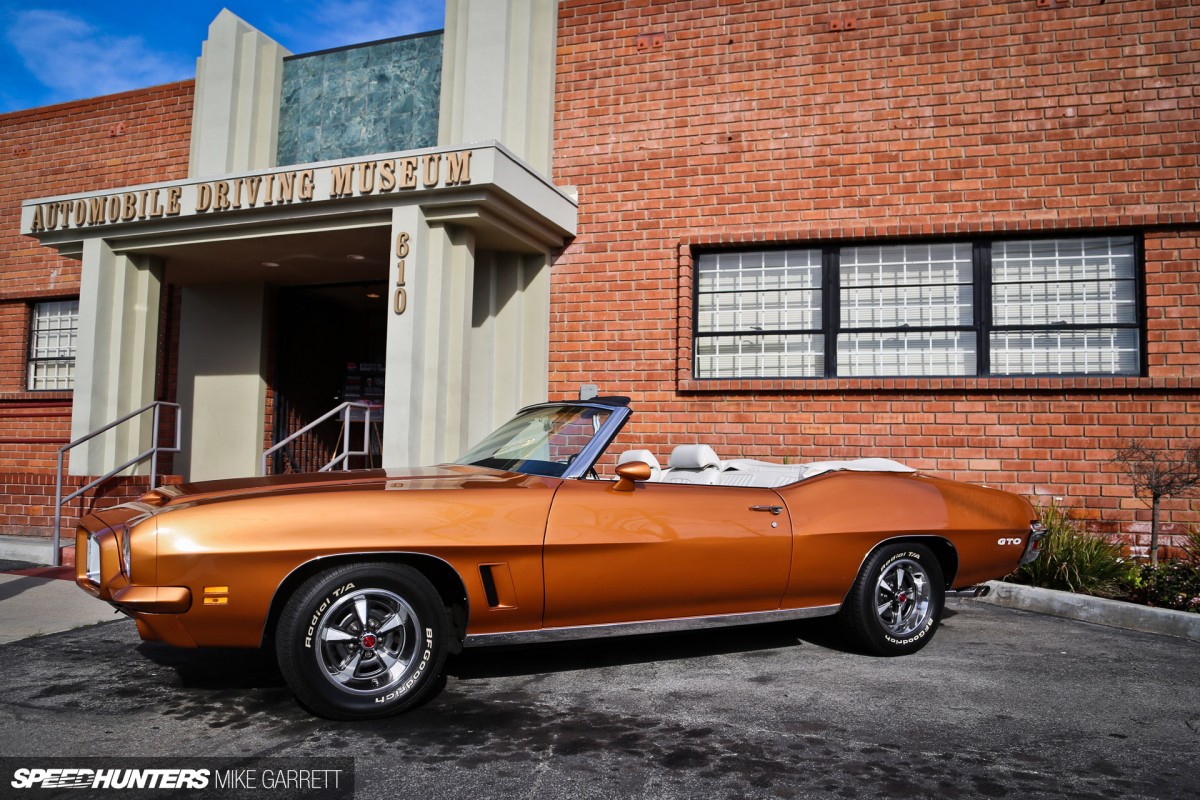
Unfortunately though, winds were shifting. On one side insurance companies were now slapping enormous premiums on muscle cars which put ownership out of reach for many, and on the other side stricter environmental standards and a looming gas crisis would soon spell the end for both the GTO and the American muscle car itself.
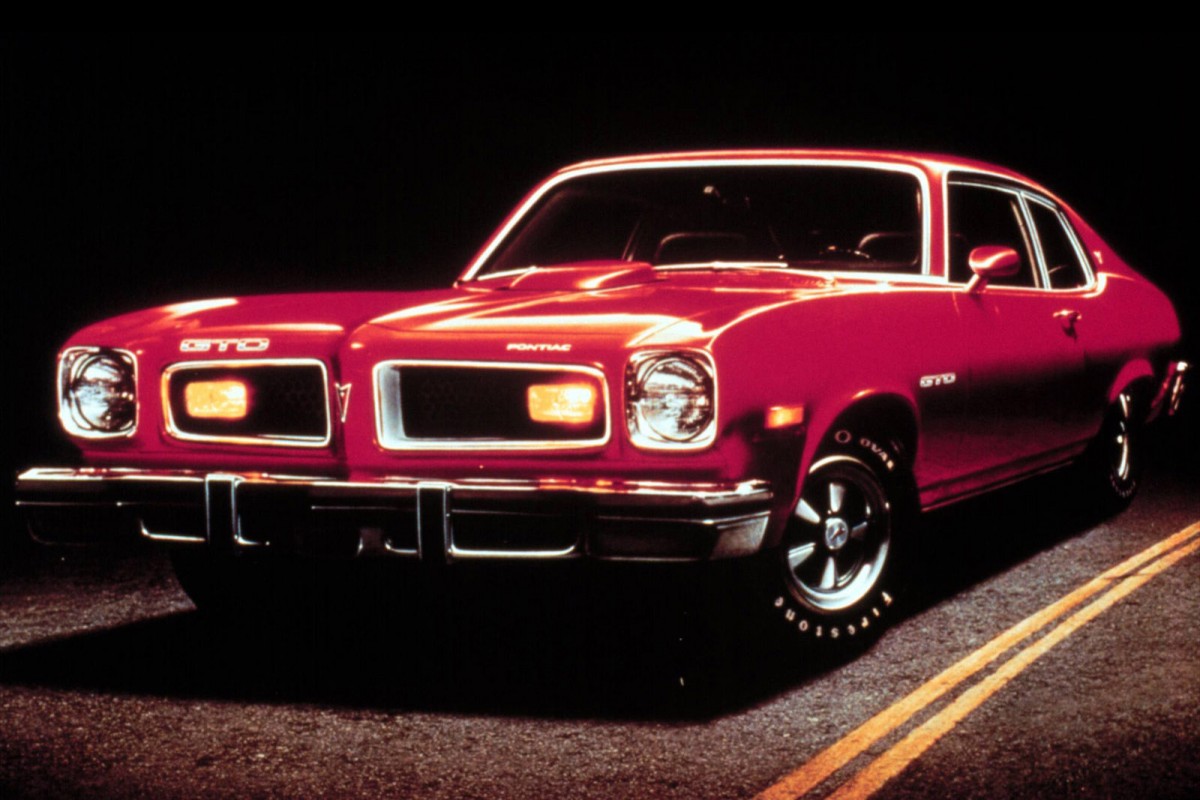
By 1974 the GTO had morphed into a shell of its former self, now an option on the Pontiac Ventura – which was itself a re-badged version of the Chevy Nova. The only engine available was a 350 cubic inch V8 that made just 200 horsepower. For all intents and purposes, the muscle car era was over.
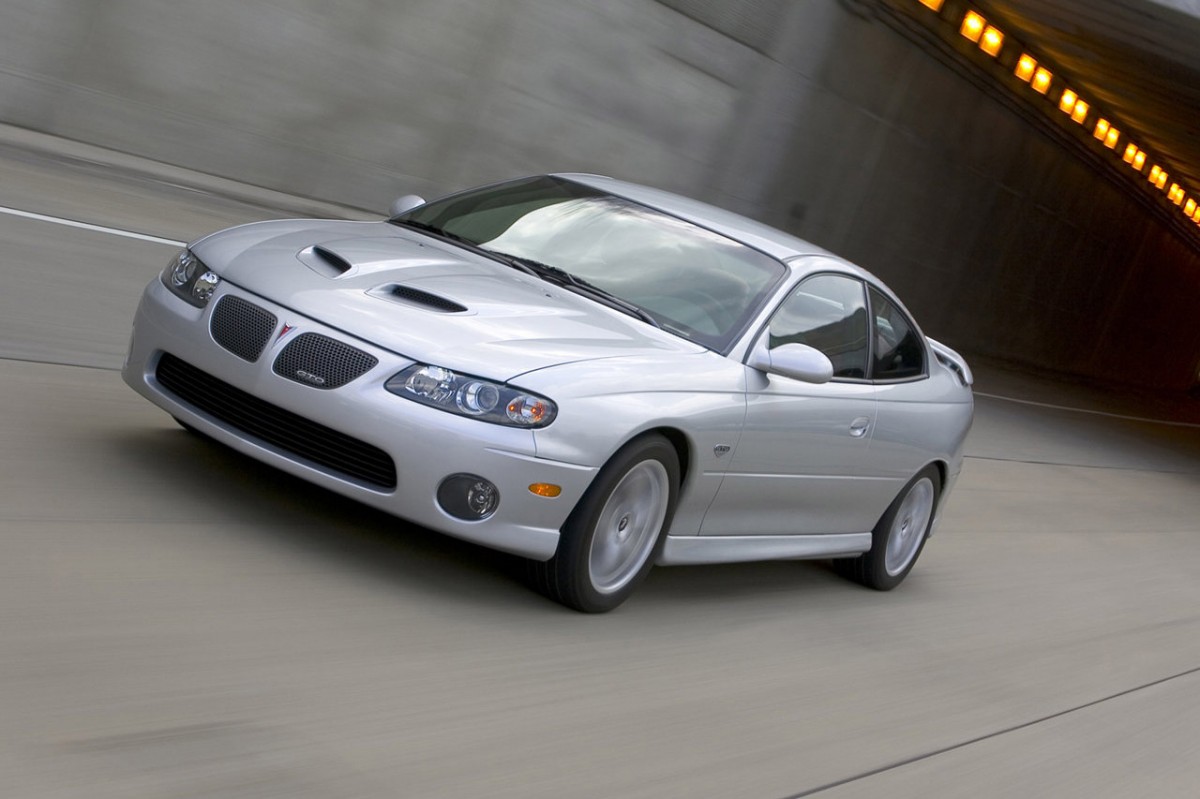
Three decades later in 2004, the Pontiac GTO returned to the USA in the from of a rebadged, left-hand drive Holden Monaro from Australia. By all accounts the Aussie GTO was a fine modern muscle car, but all hopes for the GTO’s future were dashed when GM decided to shut down the Pontiac brand in 2009 as a result of the global economic meltdown. With all the amazing performance cars Detroit is rolling out these days, we can only imagine what a new GTO might be been like.
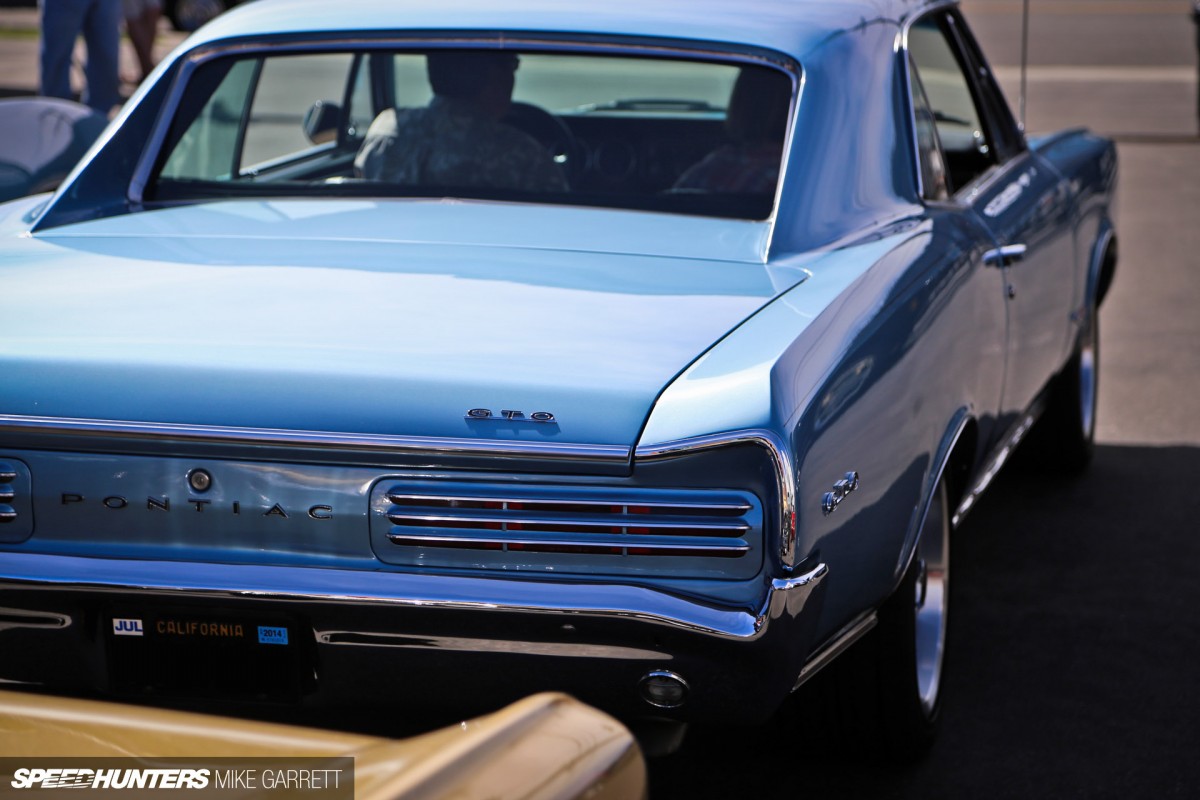
But while both the GTO and the Pontiac brand may be no more, we can rest assured that thanks to people like Jim Wangers and GTO owners and enthusiasts around the world, the intriguing story of the original muscle car will not be forgotten any time soon.
Now if you’ll excuse me, I think I need to call dad and ask if I can borrow the car this weekend.
Mike Garrett
Instagram: speedhunters_mike
mike@speedhunters.com






Prepare to be Judged!
As a '70 LeMans owner, and a diehard Pontiac fanatic, thank you for this article!
The first car that I remember riding in was my dads 64 GTO with a tri-power and 3-speed manual. Quite the first car memory. Probably why I love muscle cars to this day. Between the Goat and the 65 Buick Gran Sport that I grew up in, I really love A-body GM cars from the mid 60's.
Speedhunters_Bryn Not sure if Dredd reference.
Very nice article, and very informative! i do not really know a lot about muscle cars, i have to admit, so what is the meaning of A-Body muscle cars?
Gianluca FairladyZ A-Body is the "chassis code" if you will for all of the GM Midsize cars from the mid 60s to early 70s - Chevelle, Buick Skylark, Olds Cutlass, Pontiac Tempest etc.
Berginator33 Nice! I feel very much the same.
WindsorShatzkin Thanks! Cool to see another Poncho fan on SH!
Sweet article I like these grassroots pieces.
Great article love the muscle cars.More please..
"This Judge can be bought."
Best ad campaign that was never made official (the company's lawyers didn't approve).
Wildcardfox So good! '60s and '70s advertising was just as good as the cars of that era
turbom Noted!
FrostyBrews101 Thank you!
Pontiac has always been my favourite american brand, and the '65 GTO my personal favourite muscle car, what a shame the company doesn't exist anymore... maybe it will return in the future.
Mike Garrett Gianluca FairladyZ Ok thanks!
When I was a kid I found a 67 GTO in the classifieds and my dad bought it. We had it for years and when I moved to TX I asked him to sell it to me. He refused, instead selling it locally. I didn't find out until a while later. I'm still pi$$ed about it as I loved that car. Still my favorite muscle car.
Always loved GTOs, but I believe the 1st 'muscle car' to be the '49 Olds Rocket 88, and the GTO put the concept on the map. I'm just sayin'...
I also loved the 64 GTO, but lets give some credit to the man who
clearly was behind the 64 GTO concept. It was not Jim Wangers as the
article suggests. It was John DeLorean who was a top engineer at GM at
the time. He gets full credit for the design and concept. http://en.wikipedia.org/wiki/John_DeLorean
EvolveWRC We are 100% on the same page as I totally agree with everything u said. The 65 GTO is my favorite car along with the Pontiac brand. Loved the three duces and the four speed manual.
Scoop
I loved my '64 GTO like it was part of me and after a couple of years of extreme driving under my belt I began to know exactly how it would respond to any input.The heavy nose would keep you where you steered and you could control the cornering with throttle input to the monster motor.My greatest admiration and appreciation to the engineering team that built the most fun to drive car I ever owned.Wish I'd never had to sell it in 1973,but family comes at a price.When rumors of it's return emerged in 2003 I was hopeful of something retro close to '64 ,but was disappointed in artist concepts and opted for a terminator cobra instead.Only option now is to go antique shopping.Thank you Speedhunters for preparing this great tribute to the muscle car icon.Your history seems to be as I lived it with the minor exception of the redline tire paragraph.True, the Uniroyal tigerpaw tires the GTO came with were poor in the traction category,but in '64 the pinstripe was a bleached out orange.The red stripe came out on the '65 models.Doubtful you can find the original stripe aftermarket today,but to be100% period on '64 it's orange.